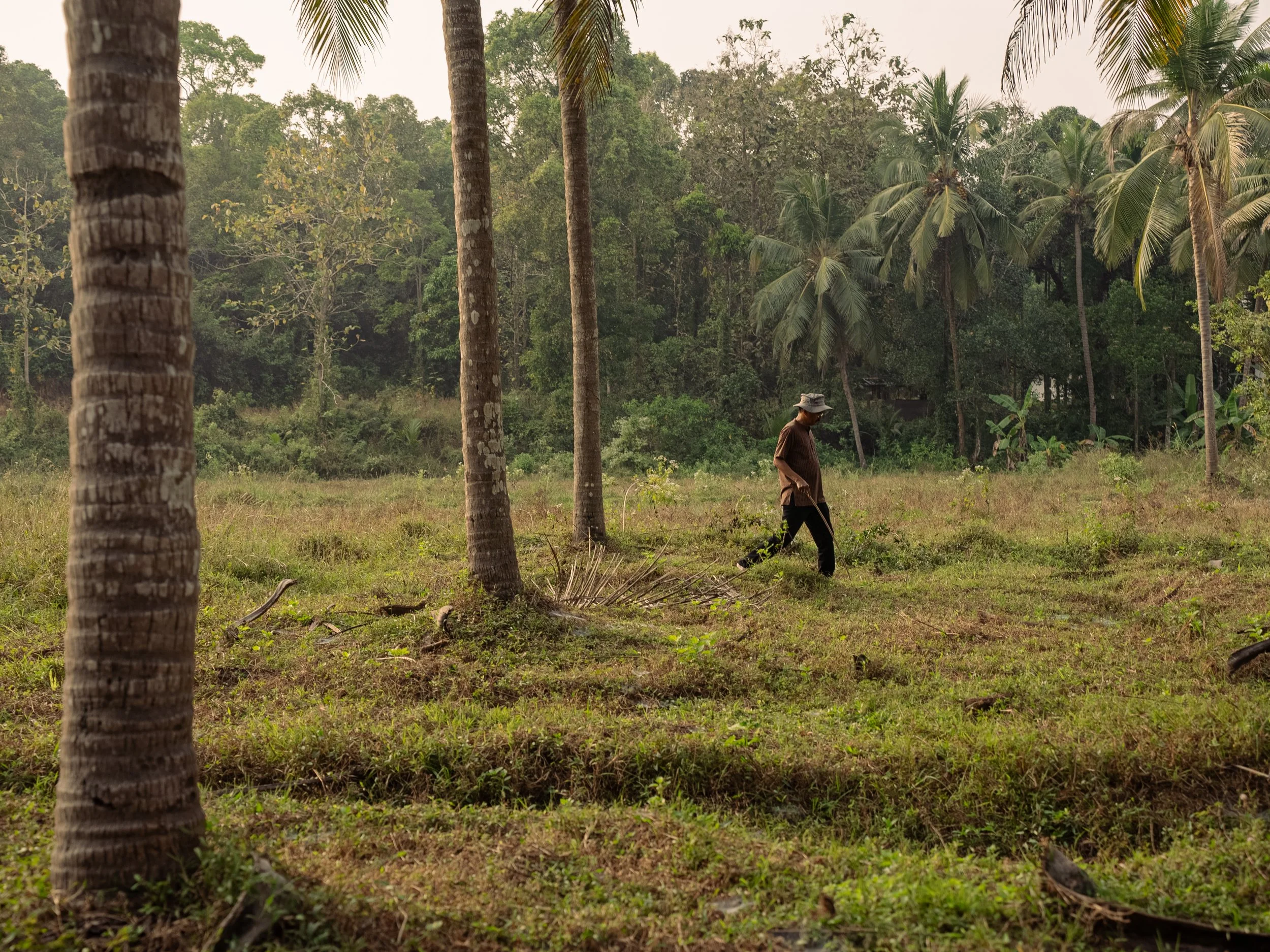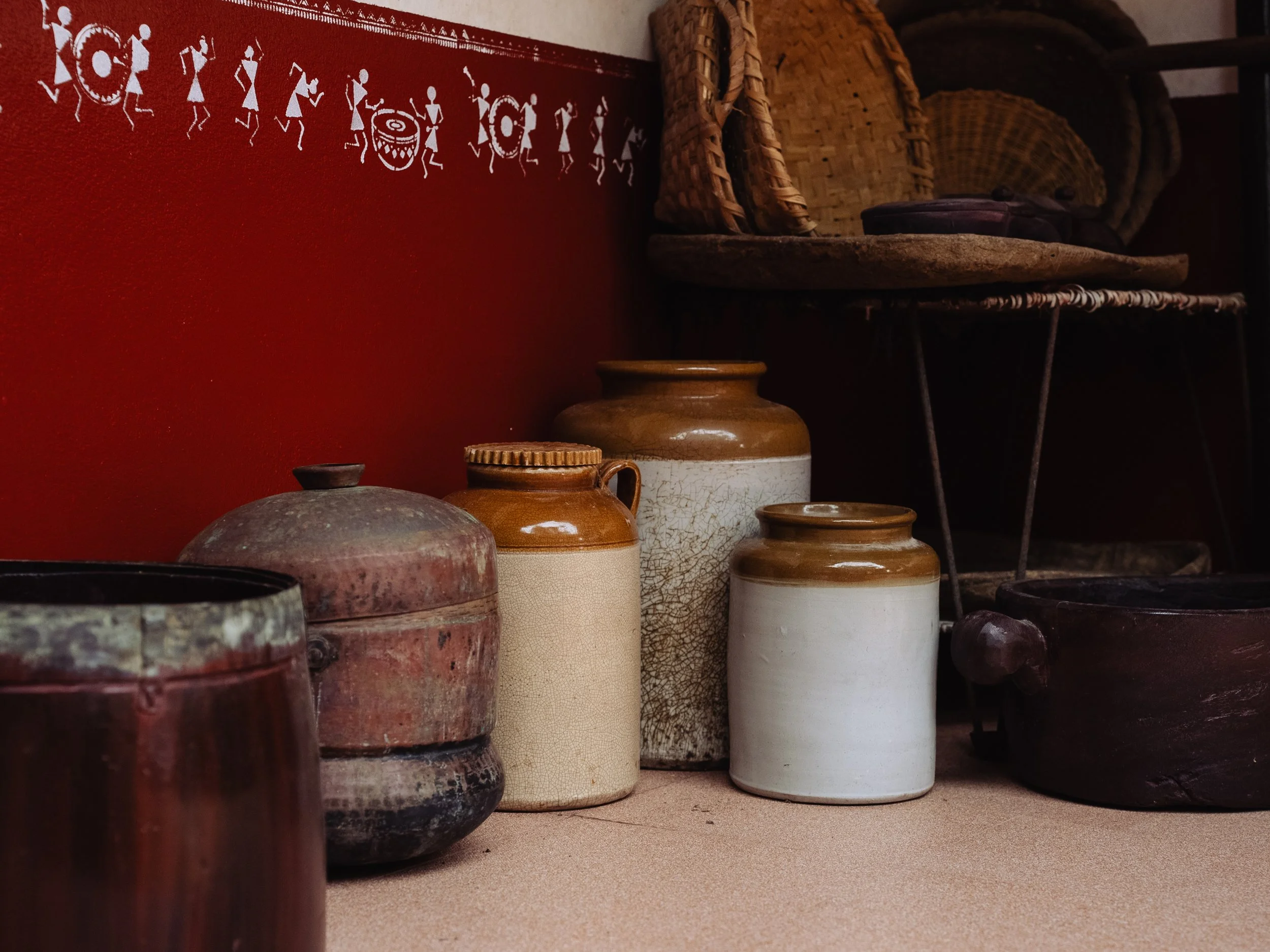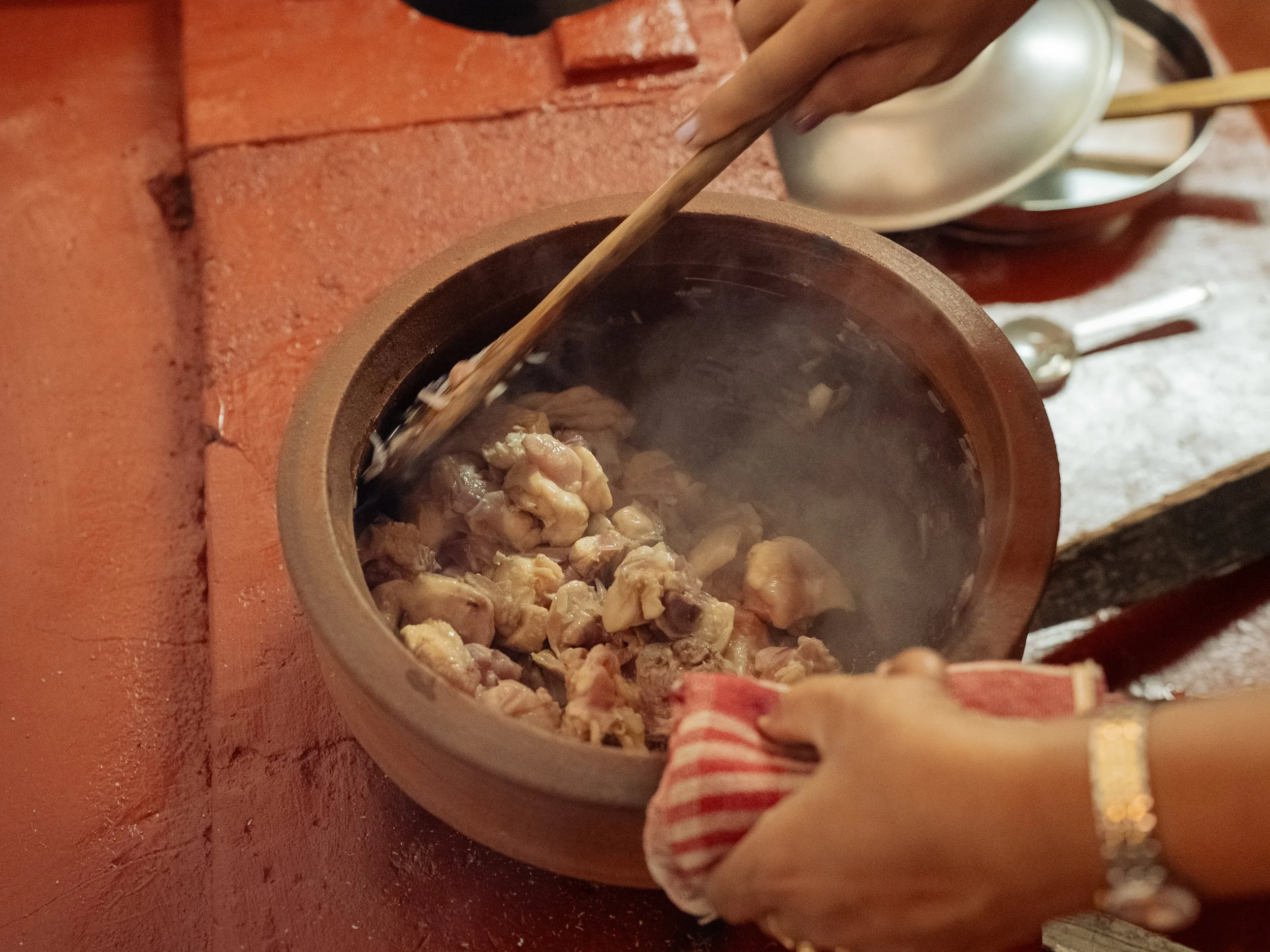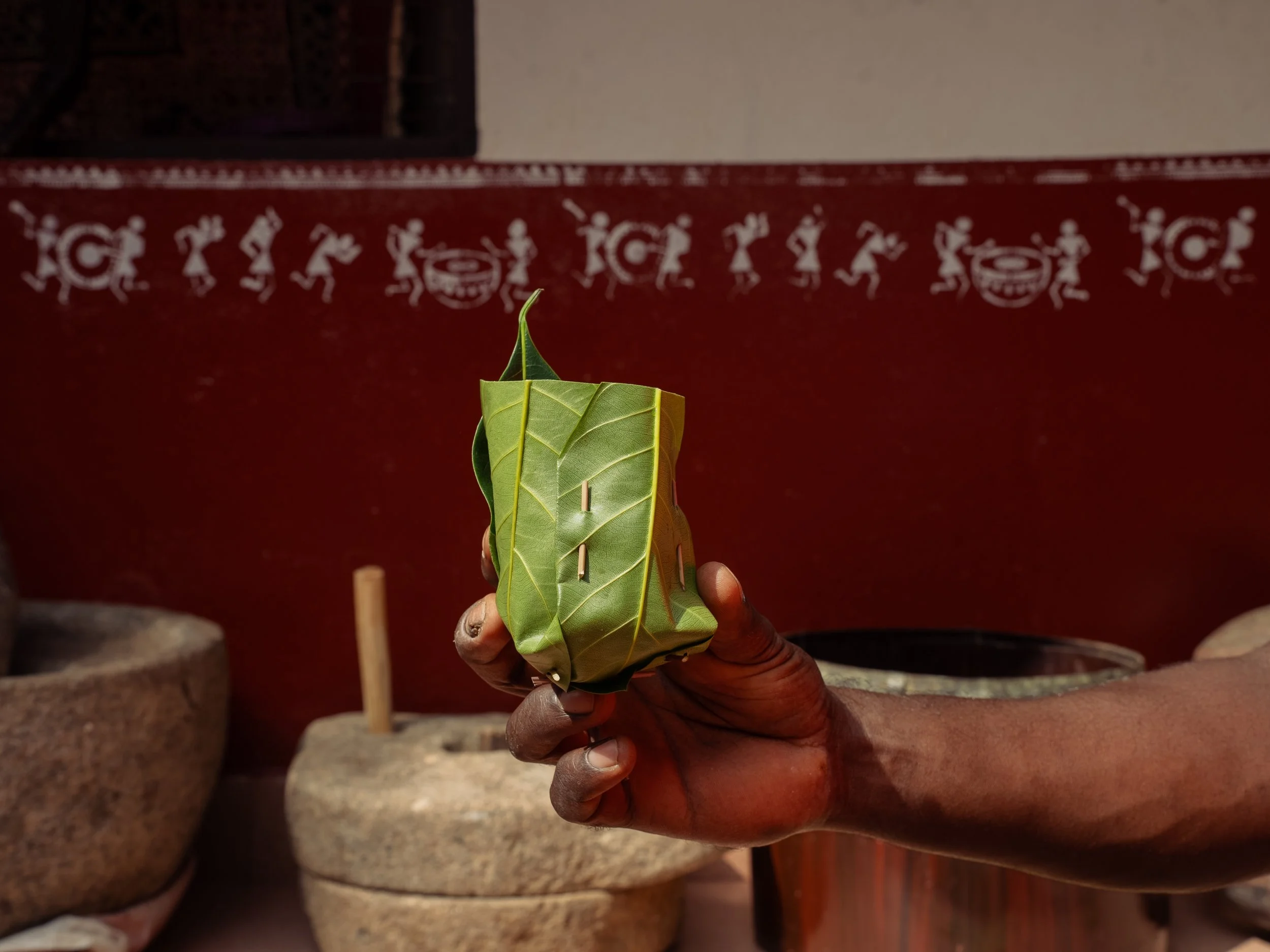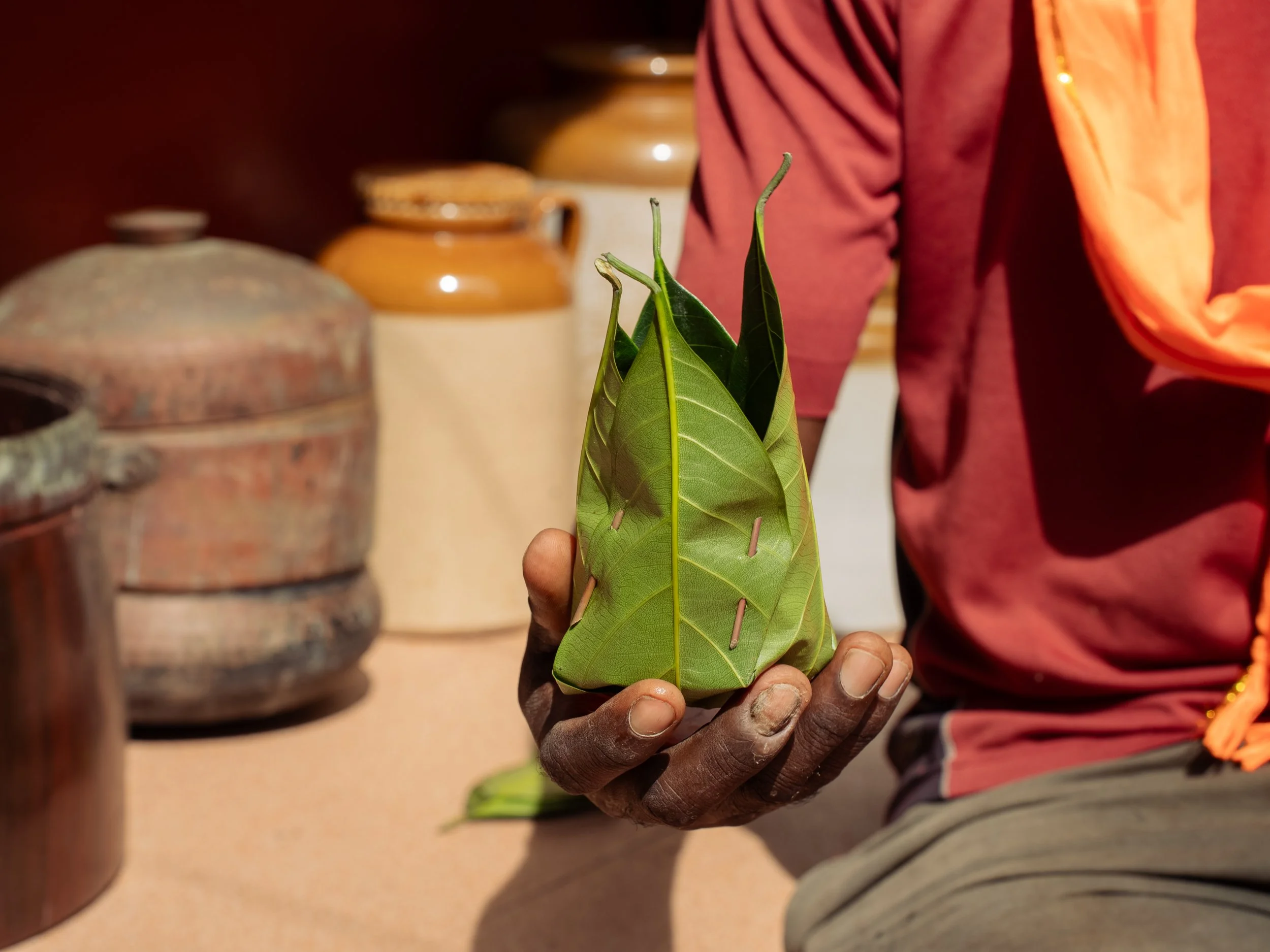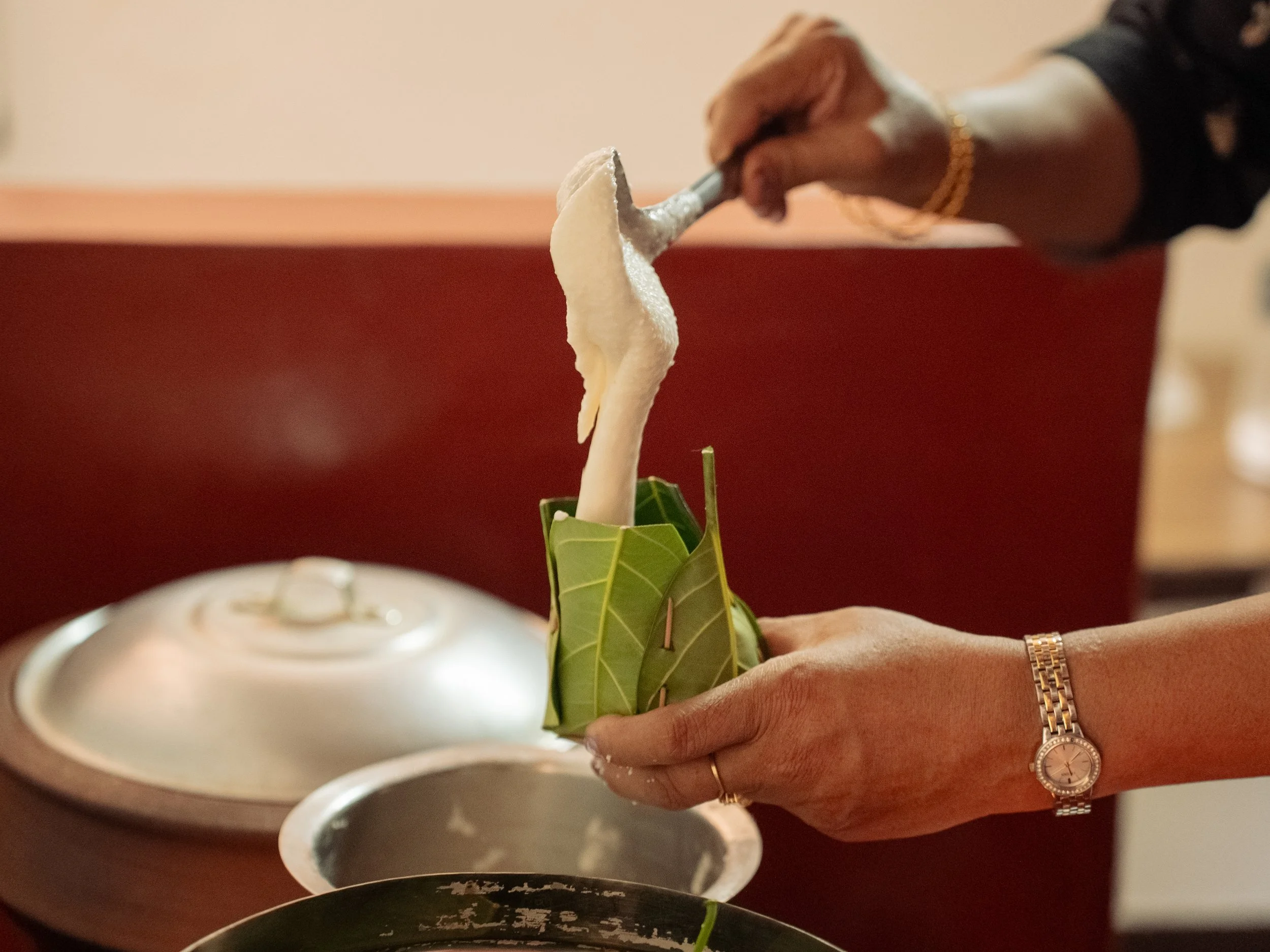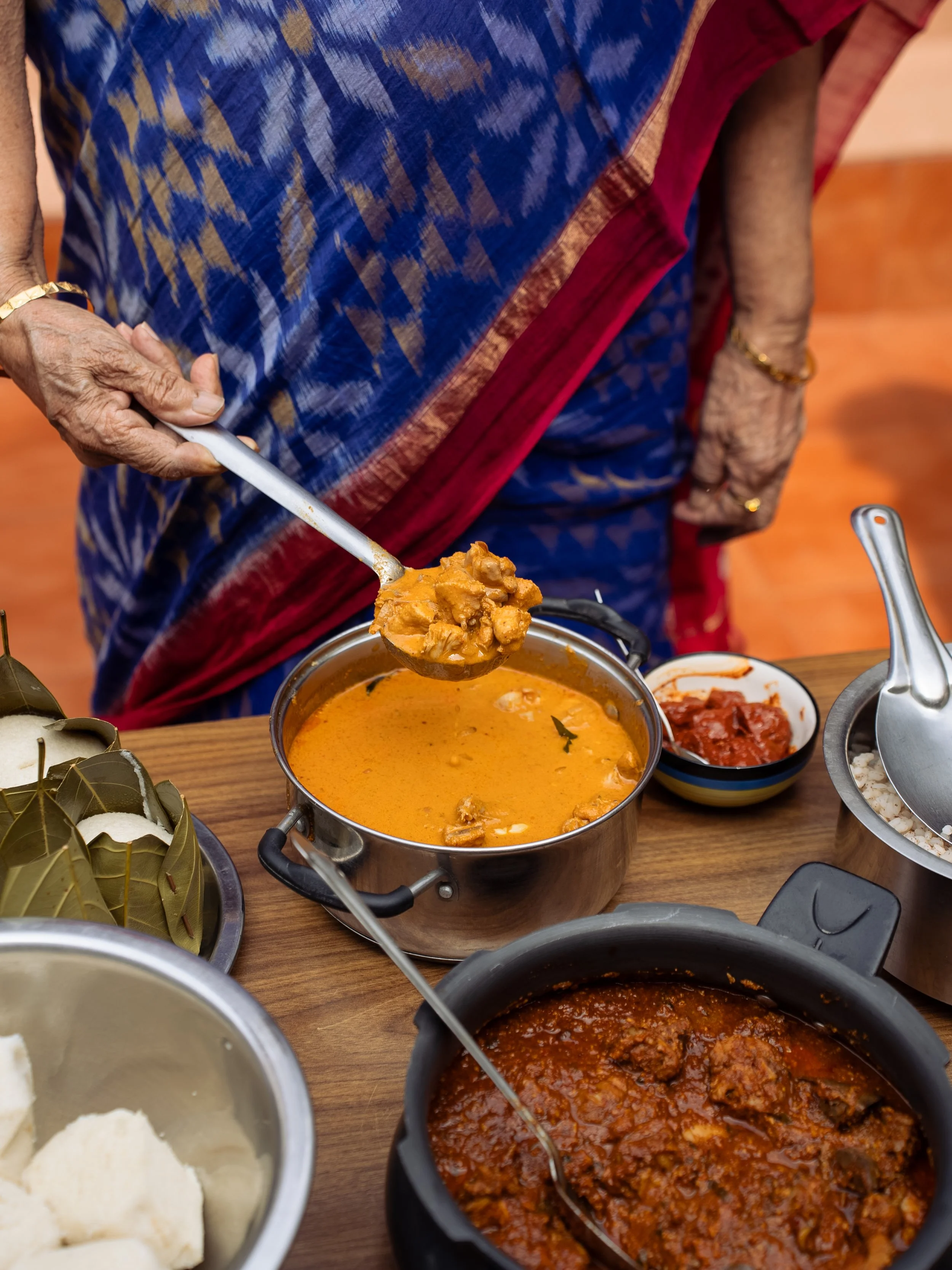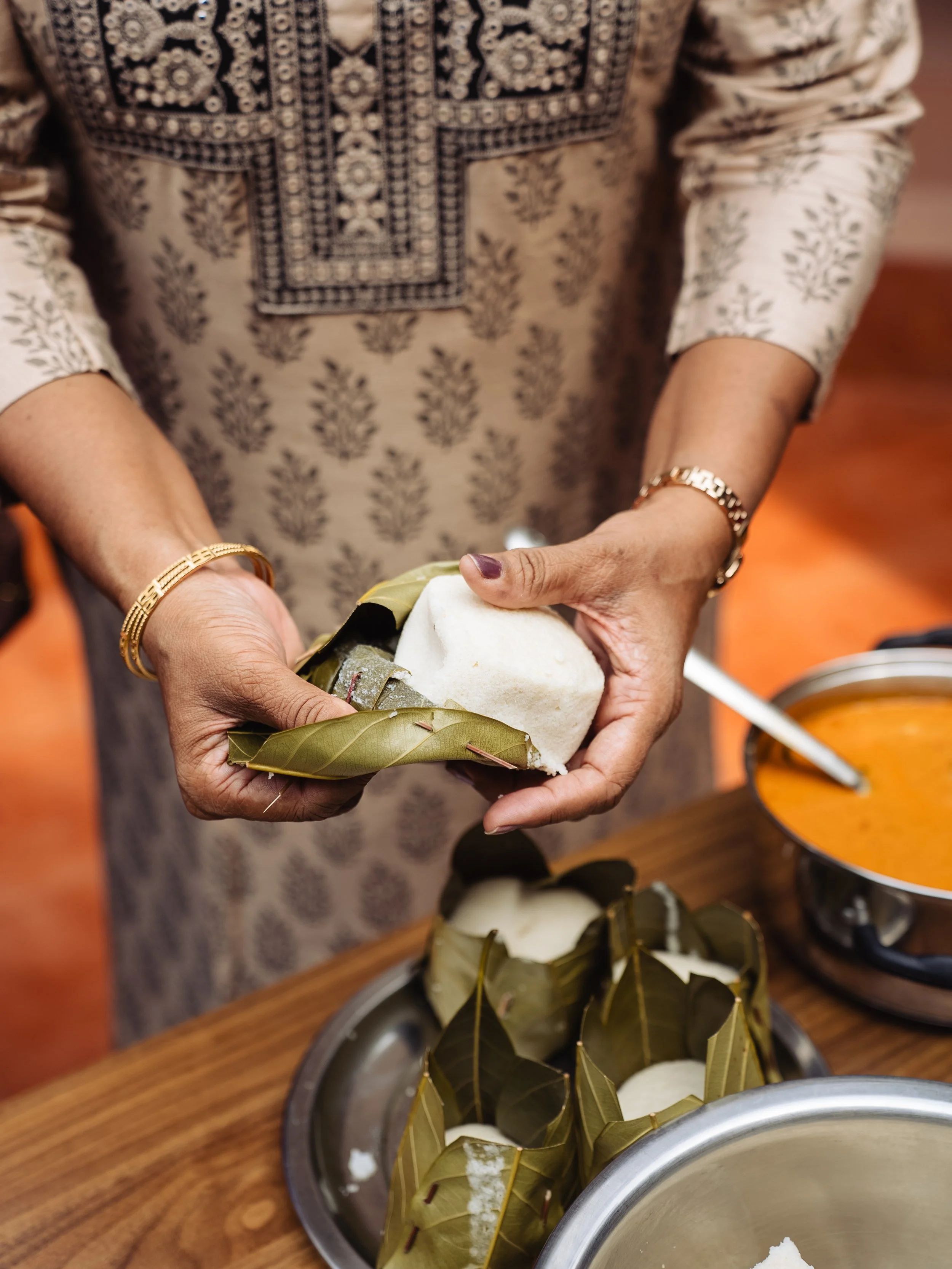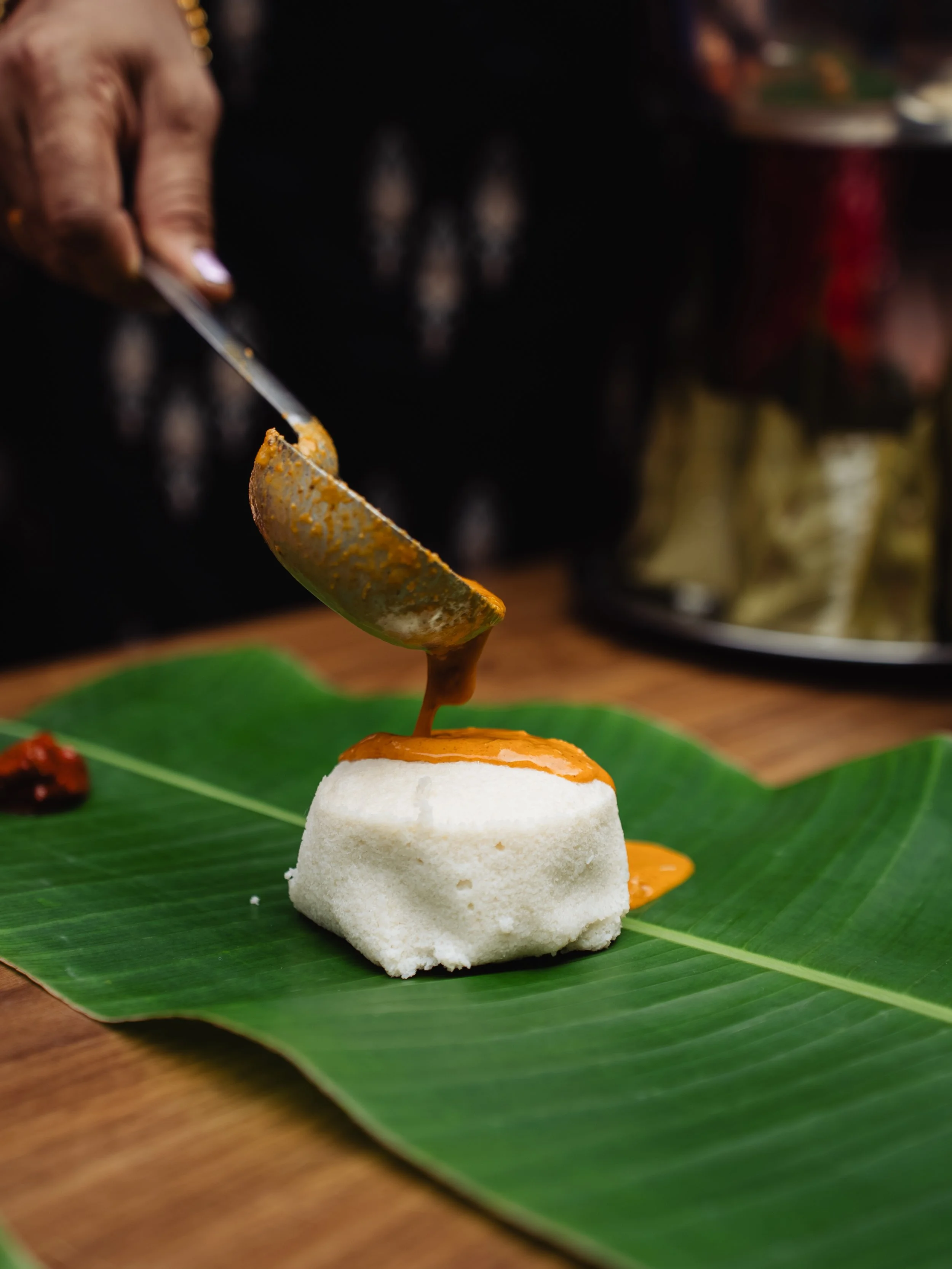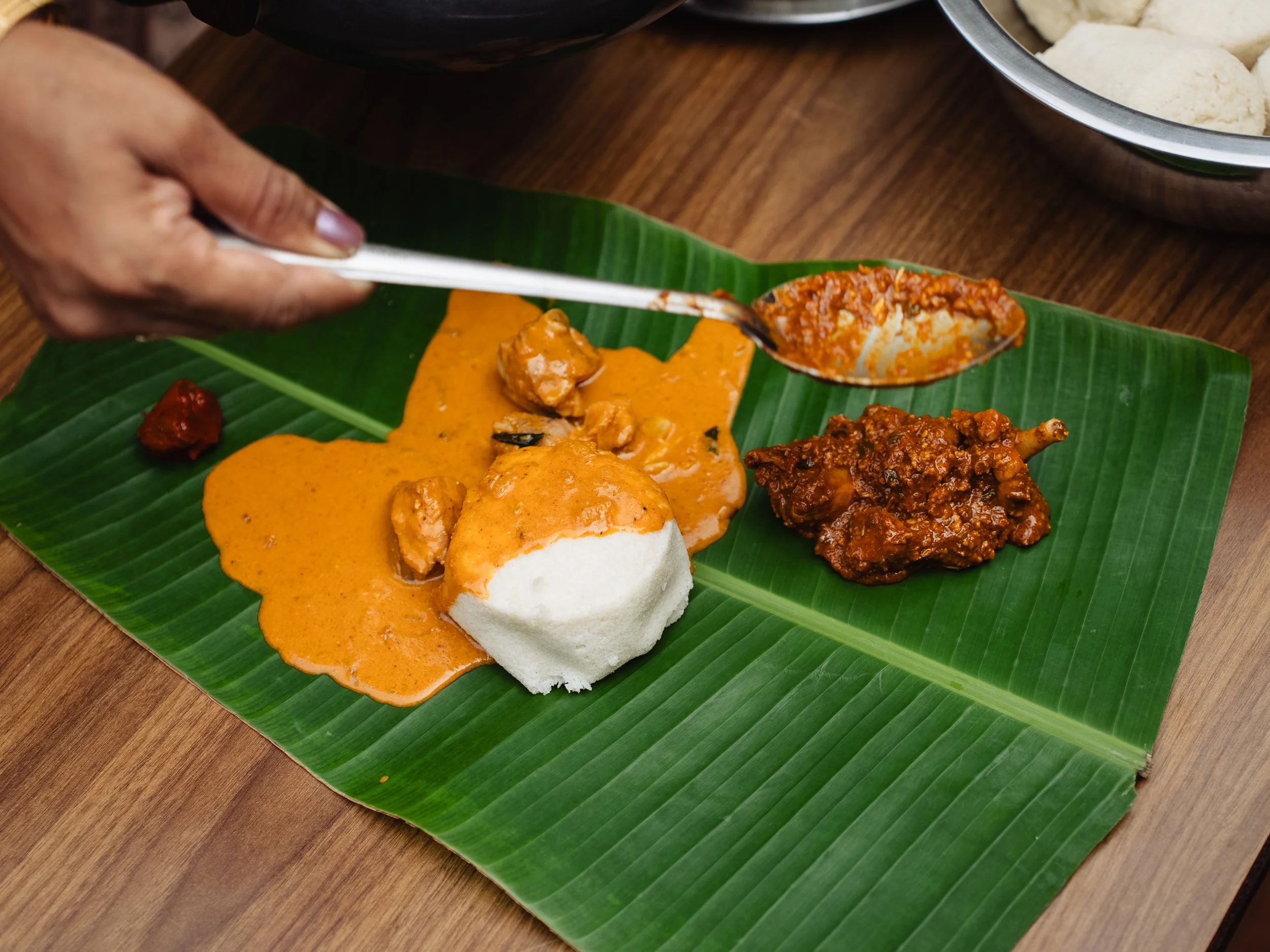#1000Kitchens: Geetha Shetty's Kori Gassi is a Legacy in her Matrilineal Home
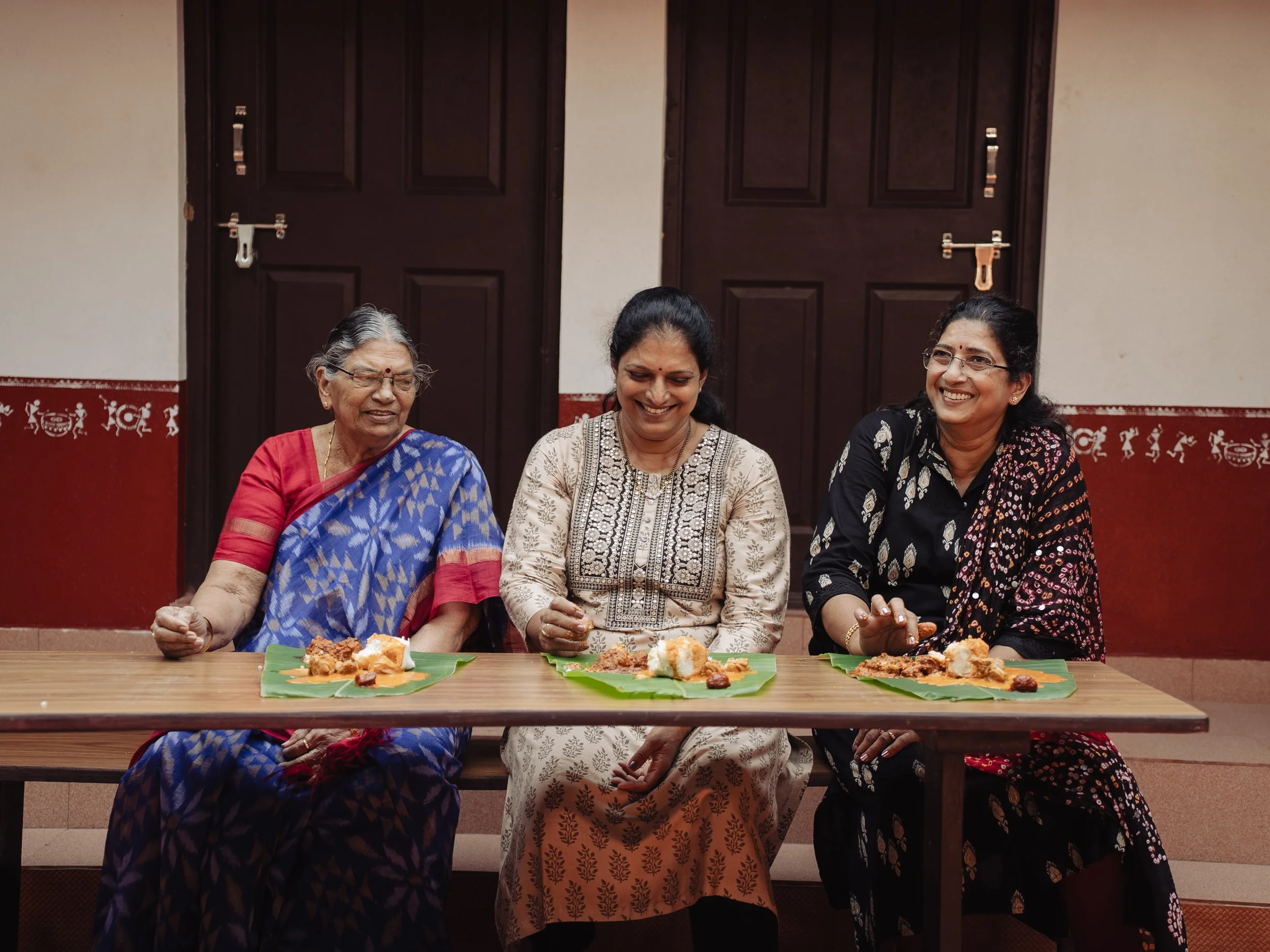
At Goya, celebrating home cooks and recipes have always been at the heart of our work. Through our series, #1000Kitchens, we document recipes from kitchens across the country, building a living library of heirloom recipes that have been in the family for 3 generations or more. In this edition, Mradula Hegde speaks to Geetha Shetty, who is keeping alive her Bunt community’s traditions with their signature dish, kori gassi.
This season’s stories are produced in partnership with the Samagata Foundation—a non-profit that champions meaningful projects.
The way to Geetha Shetty’s house in Shiroor, Udupi, is through a tropical paradise. Coconut tree canopies above red soil, sunlight glinting on paddy fields, clear blue skies, and houses adorned with rust orange Mangalore tiles.
This is Geetha Shetty’s ancestral home. The eldest of three siblings, Geetha’s childhood was spent in Bengaluru but every visit to her grandmother’s home in Shiroor was special.
“This house here belongs to my mum, Saraswathi Shetty. Ever since my father died, my sister and I take turns to be with her, as she lives alone.” Geetha belongs to the Bunt community from Karnataka’s South Canara region, who follow a matrilineal system, or Aliyasantana, as it is known in Kannada. “Daughters are the ones running and supporting the household in Bunts,” she explains.
Today, three generations of the family have gathered together at her ancestral home to cook up kori gassi, with a side of kotte kadubu (rice cakes steamed in jackfruit leaves). Kori gassi is a signature recipe in her community. “At every Bunt wedding, you’ll find kori gassi. The feast is incomplete without it.” Kori is the Tulu word for chicken, and gassi is a curry, but the spice mix and base can vary for different produce and meats.
From where we sit, we can admire Geetha’s garden, awash with arecanut, coconut, pepper vines, and turmeric, and a mango tree that’s been there since her grandmother’s time.
A burst of sunshine greets us as we step into her kitchen. For those of us from the west coast, it is not unlike stepping into our own grandmother’s kitchen — with red oxide floors, ceramic pickle jars arranged heightwise, small and big granite grinding stones lined up against a warli-painted wall, and wicker baskets stacked like Russian dolls.
Her sister and mother are her sous chefs today. “My grandmother loved to make kori gassi for all of us. I remember her cooking it in a clay pot over a wood fire. She knew what each of us liked, so she would set aside pieces for her favourites in a separate pot.” Just like her grandmother, she has also chosen to cook kori gassi in a clay pot, over a wood fire.
“We make a dry roast version of this masala base. If you refrigerate it, it stays good for a year easily, and comes in handy when you need to make something quickly,” she says. The powder, called Kundapur chicken masala, accompanied Geetha to her marital home in Bombay, which she then used to make fish fry, prawn, and crabs.
In the kitchen, Geetha handles each ingredient carefully, and with attention. “The gravy is made from coconut milk. We grate and grind the coconut and then extract the milk from it in stages, as each extract serves a different purpose. The creaminess you see in the gassi is all from the coconut milk. This coconut milk extract balances the spices well, and it pairs very well with rice items like neer dosa, kotte kadubu, mosaru dosa, rotti, because of the creamy texture. ”
While she cooks, her domestic help Gopala, makes jackfruit leaf pockets for the kadubus. A set of four leaves are placed together like a square and gently folded at corners to make a pocket tower. These leaves are held together by tiny toothpick-like stems, and the top is cut on three sides to create an opening. One leaf is intentionally left whole, to make it easy to hold and pour the batter into it. It is an origami class with an Indian theme.
“Whenever I make this gassi, the aroma reminds me of my grandmother. From the minute I roast the spices and coconut, I am transported back to my summer holiday memories. My mother learned this dish from her grandmother, and she from her mother.” The first time Geetha cooked the gravy, she was barely 17. Her mother was away tending to her ailing grandmother, and she had to step up and take charge of the kitchen.
While the gassi is simmering, Geetha places the kadubus in a dome-shaped idli cooker, something I have only seen in coastal homes like my own. She tells me that the gassi pairs the best with kori rotti, but the gravy needs to be watery for it. For other dishes, it needs to be a bit thicker.
As they set the table, our plates arrive. These are banana leaves, cut, cleaned and laid out. I can’t help but marvel that our eating habits have always been sustainable and we have been practicing circular economy since forever — making use of fresh produce from our gardens and backyard, and then returning it as compost.
Geetha, her mother, and her sister move in rhythm as they serve, but hesitantly pause to see who goes first. This confusion causes a giggle roulette between them, followed by subtly checking out chicken pieces on each other’s plates (to see if someone got a bigger share). Everyone then gets busy, deeply focussed on the coconut chicken goodness in front of them.
RECIPE FOR KORI GASSI
Ingredients
1 kg chicken
Salt to taste
For the masala paste:
15 Byadgi red chillies
½ tsp peppercorn
2 tbsp coriander seeds
1 tbsp cumin seeds
½ tsp methi seeds
¾ tsp fennel seeds
½ tsp poppy seeds
1 inch cinnamon bark
7-8 cloves
1 onion sliced
7- 8 garlic cloves
2 tbsp coconut oil or ghee
¾ cup grated coconut
A marble-sized tamarind (soak and extract)
½ tsp turmeric powder
For tempering:
1 tbsp ghee
1 onion finely chopped
5 - 6 crushed garlic pods
A sprig of curry leaves (optional)
Method
Fry the spices one by one in ghee/oil, starting with chillies. Once the spices are done, fry the onion and garlic in the same pot, ensuring they are transparent.
Then fry the coconut. Ensure you don’t burn any of this mixture because this crucial step gives the distinct flavour and colour. Add tamarind to this and make your paste.
Extract coconut milk, you’ll need at least 2 -3 extracts. Set aside all the extracts. The first extract will be thicker. Be frugal with water usage for the first extract. For the next two, add water slowly and the consistency becomes thinner with each extract. This is a crucial step because every extract has a specific role to play.
In a heavy bottom pan, fry crushed garlic and onion until it's transparent. Then add chicken and a little salt to this. Cover and let it cook for a bit until the colour changes a little.
Now, add the second extract of milk to this and the ready masala and allow it to cook. It’s a reverse order. Once it’s done a little, add the first extract and let it simmer until the first boil for 5 mins. Once it boils, turn off the heat.
While the curry cooks in residual heat, make a tadka of finely chopped onion and crushed garlic. You can add a few curry leaves too.
RECIPE FOR KADUBU
Ingredients
1 cup udad dal
2 cup idli rice/idli rava
4 leaves for 1 idli pocket
Method
Use a 1:2 ratio of urad dal and idli rice/rava.
Soak them for 5 hours and make a thick batter by grinding, adding water at each stage until you get a nice thick batter.
Soak idli rice/rava for 10 mins and add it to the batter, and let them both ferment for about 8 hours minimum. Then add salt and mix it once nicely.
Pour this batter into the kottes and let it steam for 20 mins.
Words by Mradula Hegde. Photography by Terrence Manne.
Special thanks to our partners.
ALSO ON GOYA

